Monday Morning Wrap Up – June 1, 2020
Posted on — Leave a comment
Welcome to summer. As the Great Lockdown ends and states continue to loosen Covid-19 restrictions, Americans are venturing out to shop, socialize, get their hair cut and eat at outdoor restaurants, tables spaced six feet apart. The U.S. economy is slowing returning to work.
While the reopening is encouraging for the economy, there remain many challenges for customer-facing businesses. This is likely to be a long process as social distancing measures remain in place limiting full capacity of restaurants, hair salons and other in-person businesses.
U.S. – China Tensions Flare
On the global stage, U.S. – China tensions flared last week, which could warn of a hot summer ahead, and we don’t mean the weather.
The latest escalations of friction between the U.S. and China remind us that the global power struggles that faced the world’s two largest superpowers before Covid-19 haven’t gone away.
Gold gained on news last week that China hardened its stance on Hong Kong democracy demonstrators, with a resolution to impose national security laws intended to suppress protests.
The Trump Administration, meanwhile, continues to seek a trade deal with China. The on-going trade talks could limit an American response that could anger China as long as talks continue.
Meanwhile, protests at home cropped up last week…
Nationwide Social Unrest
Protests were seen in 30 U.S. cities last week over the death of George Floyd, a black man, at the hands of a Minnesota police office. At least 25 cities were forced to impose curfews. In Washington D.C. clean up crews worked on Sunday to sweep up broken glass from storefront windows and office buildings and were cleaning graffiti off buildings near the White House.
The Economy and Markets
Over two million additional Americans applied for unemployment benefits last week, bringing the total to an unprecedented 40 million claims over last 10 weeks.
Second quarter U.S. GDP growth is estimated to be an unheard of 40.4% decline, according to the Atlanta Fed’s GDPNow model.
In the midst of this truly devastating economic news, the stock market rallied last week. The S&P 500 closed above its widely-watched 200-day moving average, in another sign of a major disconnect between Wall Street and Main Street.
It is often said the markets are not the economy. And, the economy is not the markets.
That is quite clear.
The market is pricing in perfection – a perfect reopening with a fast-tracked Covid-19 vaccine and a swift return to pre-pandemic activity.
Stock market investors are betting the economy will recover and corporate earnings won’t be far behind. They aren’t taking into consideration the true economic wreckage of 40 million lost jobs in ten weeks and a 40% decline in growth in the second quarter.
Companies can’t make money if people don’t have jobs and can’t spend. Even though the businesses are reopening, they are not at full speed. To think that corporate earnings will rebound to pre-pandemic levels is folly.
Expect to see tough economic numbers over the next several months.
What do we know? History shows us that financial markets overreach. They overreach on the downside and they overreach on the upside. The recent gains in the stock market are just one more overreach in a series of wild of swings that we’ve seen since the start of the year.
It’s All About the Consumer
Even with the reopening, the coronavirus has already had a significant impact on American’s everyday finances, from their paychecks to their spending habits. These trends are likely to stay in place even after the pandemic resolves.
It’s consumer spending that makes our economy go round, with roughly two-thirds of U.S. GDP driven by things you and your neighbors buy. The willingness of Americans to buy at a normal pace will be the key consideration on whether we have a “V” shape economic recovery or a lengthier, “U” shape recovery.
What’s Next?
This Friday, the Labor Department will release the May employment report.
Forecasts are calling for a 20% unemployment rate. That’s right. The unemployment rate in the Great Depression stood at 25%. We aren’t far behind. We’ll let you know how the numbers look and what it means for you, your portfolio and the economy in next week’s report.
The Bottom Line
In 2020, we’ve seen the Fed slash interest rates back to zero, making cash and bonds an unappealing alternative to investors. Make no mistake, gold’s relevance and importance to both global monetary bodies and individual investors is climbing every day.
As we entered 2020, gold was already showing the beginnings of a bull market, or rising market. There is growing evidence that this was indeed the Dawn of a new Bullish Decade for gold, with multiple forecasts for new all-time highs ahead.
New Study Shows Heightened Financial Worries
Over seven in 10 (72%) say the impacts of the COVID-19 pandemic are making Americans rethink how to protect their retirement savings from volatility, according to a new study released by Allianz Life Q2 Quarterly Market Perceptions Study last week. Other findings include:
- 58% of Americans say the economic impacts of COVID-19 are having a negative effect on their financial retirement plans.
- 54% of Americans are worried the market hasn’t bottomed out yet.
In the midst of these financial concerns, gold stands strong, with gains of over 14% since the start of 2020, acting as it has for centuries a safe-haven in the storm and a vehicle to preserve and grow your wealth.
David
Want to read more? Subscribe to the Blanchard Newsletter and get our tales from the vault, our favorite stories from around the world and the latest tangible assets news delivered to your inbox weekly.
The Warren Buffett Silver Trade
Posted on — 1 CommentKnown as the “Oracle of Omaha,” many believe Warren Buffett, Chairman of Berkshire Hathaway Group, to be the greatest investor of all time.
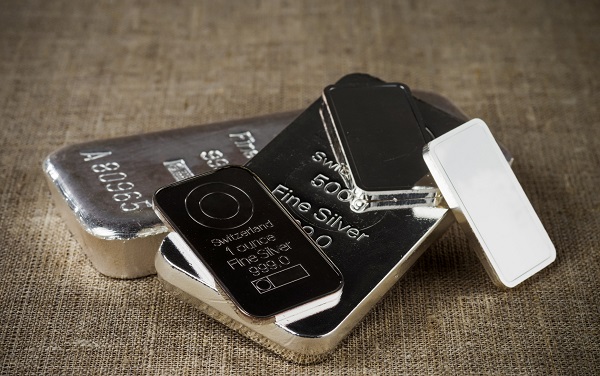
What many investors may not know about Warren Buffett is his big silver buying spree 20 years ago.
From 1997 until 2006, Berkshire Hathaway bought over 37% of the world’s silver supply. A keen value investor, Buffett saw silver’s collapse from $50 an ounce to under $10 an ounce as a buying opportunity. In 1997, Buffett bought 111 million ounces of silver, which equals about 3,500 tons.
Buffett did pretty well on that silver investment. In 1997, his company made $97.4 million (pre-tax) on his silver investment. Here’s what he said to shareholders:
“Our second non-traditional commitment is in silver. Last year, we purchased 111.2 million ounces. Marked to market, that position produced a pre-tax gain of $97.4 million for us in 1997. In a way, this is a return to the past for me: Thirty years ago, I bought silver because I anticipated its demonetization by the U.S. Government. Ever since, I have followed the metal’s fundamentals but not owned it. In recent years, bullion inventories have fallen materially, and last summer Charlie and I concluded that a higher price would be needed to establish equilibrium between supply and demand.” See the 1997 Berkshire Hathaway Letter here.
Fast forward to today.
Silver is outperforming gold in the second quarter, with gains of about 18% just this month.
Silver was shunned early in the Covid-19 crisis as industries around the globe shut their doors, which decreased industrial demand for this useful precious metal. As the lockdown ends, factories are opening their doors. Even more significantly, individual investors are rushing into the silver market as a safe-haven and wealth preservation tool.
The Covid-19 crisis has reshaped fiscal and monetary policy, opening the door to paper currency degradation, inflation, and the monetization of the U.S. government’s debt.
Several decades ago, Warren Buffett saw that silver has inherent value as both a monetary and an industrial metal – the same is true today.
Covid-19 is reshaping our daily lives, the economy, fiscal and monetary policy and the definition of what is money and a store of value. From the beginning of time, gold and silver were used as money. That’s one thing that Covid hasn’t been able to change.
Want to read more? Subscribe to the Blanchard Newsletter and get our tales from the vault, our favorite stories from around the world and the latest tangible assets news delivered to your inbox weekly.
The Uncertain Path to the Barber Quarter
Posted on — Leave a commentCharles E. Barber, the sixth Chief Engraver of the United States Mint, set out to design a set of coinage consisting of a new dime, quarter and half dollar. While the coins would ultimately carry his name (“Barber coins”) he decided to invite artists to submit designs for the new pieces. Artists were asked to submit models in low relief for judging. Barber’s guidelines were more stringent than those of previous competitions. He required that each submission feature the lettering to be included on each piece so that he and others could get a sense of the final look of the complete piece.
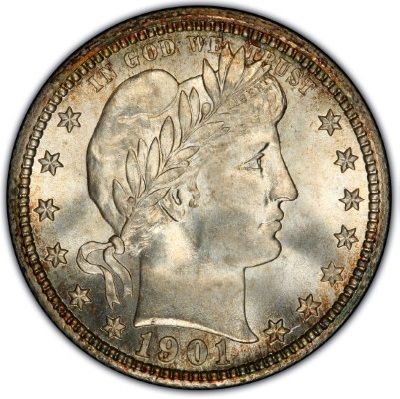
While the competition was open to the public, Andrew Mason, the superintendent of the New York Assay Office, specifically called on ten artists to submit entries. The list included renowned sculptures and painters like Daniel Chester French, remembered for his 1920 statue of President Lincoln, and Kenyon Cox, known for his multi-disciplinary talents ranging from sketch work to poetry. The winner would receive a $500 cash prize. However, soon after initiating the competition problems surfaced.
The artists invited to compete responded with a list of amendments to the guidelines. They asked that each artist be paid for their submitted work. They also asked that the work be judged by their peers and that each coin would be designed by a single artist to ensure a consistent style within each piece. Finally, the artists requested more time to complete their work. Officials declined these terms. They cited limited funds explaining that they only had enough money to pay one winner.
In the meantime, the judges began receiving entries from the general public. After reviewing each they determined that none were suitable. Officials were disappointed by what they perceived as a lack of artistic talent displayed by the various attempts. Soon after, Barber took it upon himself to complete the design work.
Barber turned to French coinage for inspiration. Following these initial designs, Barber and Mint Director Edward O. Leech had several long communications with each other as they contentiously debated the best look for the coins.
The final design of each denomination shows the head of Liberty with a crown of olive branches. The reverse side of the quarter shows a heraldic eagle with a scroll inscribed with “E Pluribus Unum.” Gripped in the right claw is an olive branch and in the left is a bundle of thirteen arrows. Upon minting, the designs received mixed reviews. In time, changes were necessary, but not as a response to those who were critical of the design. Instead, the design adjustments were for a more practical reason; people complained that the coins would not stack properly.
As a result of the alteration, there is a “Type I” coin and a “Type II” version of the 1892 quarter. In 1900, Barber made additional changes to the quarter resulting in a thinner piece allowing for 21 coins to stack in the space of 20 of the previous version. Barber’s design was used from 1892 to 1916 with the 1901-S quarter remaining a considerable rarity, along with the 1896-S and the 1913-S.
Want to read more? Subscribe to the Blanchard Newsletter and get our tales from the vault, our favorite stories from around the world and the latest tangible assets news delivered to your inbox weekly.
Find Your Territory
Posted on — Leave a commentAt the end of Mark Twain’s, The Adventures of Huckleberry Finn, the main character tells the reader that he is going to “light out for the territories.” That is, he is going to head out to the great frontier. In this new chapter of history, investors should consider how they will reach the frontier…the efficient frontier.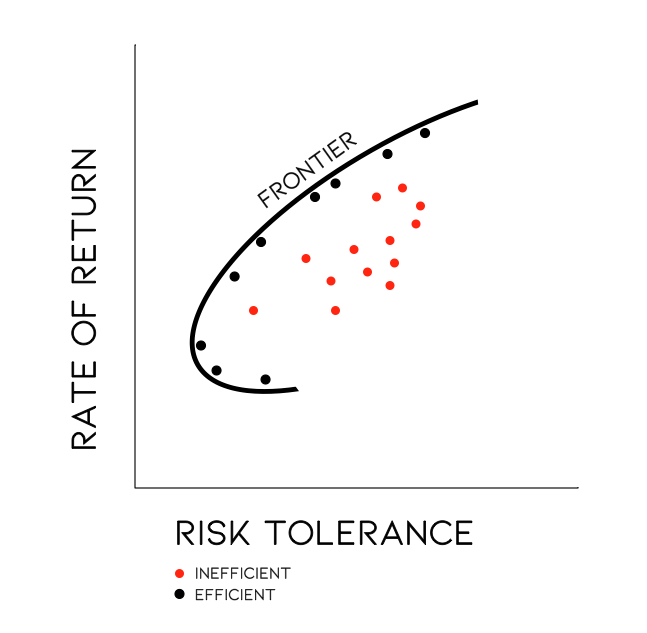
The efficient frontier is a concept that is part of modern portfolio theory, or MPT. The idea behind modern portfolio theory is that investors must seek the maximum return given the risk profile of their portfolio. The efficient frontier is a tool MPT practitioners use to assess if they are getting the largest possible return based on the level of risk they are taking on. Or, to put it another way, the efficient frontier is a way to ensure you are not taking any additional, unnecessary risk for the investment return you are receiving.
The “frontier” is a curved line that sits on an X, Y axis. The line represents the greatest possible return an investor can earn based of the level of risk represented in their portfolio. It is not possible to construct a portfolio that crosses this boundary. An optimal portfolio resides on the curve because it offers the most return for risk absorbed. If a portfolio sits anywhere below the curve it is “inefficient” because it represents a rate of return that could be increased without adding to the current level of risk. For example, an investor might be receiving a 7% annualized rate of return on a portfolio that exposes the holder to more risk than is necessary to achieve that same return.
This established concept in portfolio management has new resonance today as investors seek to ensure that there is no unnecessary risk in their portfolio given the return they are receiving. For many, rebalancing is necessary for returning to the frontier.
Research shows that gold plays an important part of that rebalance. Consider, the performance of gold in comparison to the S&P 500 during several, historic financial downturns. During the Great Recession, gold returned nearly 50% while the S&P 500 fell by almost the same percentage. In the previous 2002 recession gold gained while the S&P 500 fell. This inverse relationship has appeared many times including Black Monday, the Long-term Capital Management Crisis, and the September 11th terrorist attacks.
The present represents a critical juncture for investors. Over the last decade, many investors have enjoyed equities growth lasting for a historically long period. Over those years, many felt encouraged to overweigh their exposure to equities in what seemed like a “can’t lose” environment propelled, in part, by accommodative monetary policy.
Now, many are awakening to the fact that their portfolio has become a more aggressive play than they intended. As a result, they reside well beneath the frontier. With gold, they can rebalance the risk profile of their portfolio without severely impacting the return they have factored into their long-term plan.
Want to read more? Subscribe to the Blanchard Newsletter and get our tales from the vault, our favorite stories from around the world and the latest tangible assets news delivered to your inbox weekly.
Monday Morning Wrap Up – May 25, 2020
Posted on — 1 CommentHarold Hamm lost more than $3 billion in March.
The self-made billionaire is scrambling to survive the bust in oil prices, which saw New York crude oil trade below $0 a barrel last month. With no college degree, Hamm first hit it big by drilling in an overlooked North Dakota oil field over a decade ago. The coronavirus pandemic tanked global demand for crude oil, another market completely disrupted by the crisis.
While you probably didn’t lose $3 billion in the last few months (we hope), your portfolio is likely still suffering, which reminds us all about the importance of asset allocation and portfolio diversification.
The stock market has rebounded partially off its recent lows. Yet, the S&P 500 index remains down about 9% for the year, which could easily mean thousands of dollars in losses for you, depending on the size of your portfolio.
Speaking of billionaires, legendary hedge fund manager John Paulson, is still betting big on gold right now, CNBC reported last week. This is not surprising. Recent market action has reminded us all about the importance of portfolio diversification and investing in assets like gold and silver that go up when stocks go down.
Gold is one of the best performing asset classes in 2020, up about 13% for the year.
Now, silver is playing catch-up, as we’ve long expected, with a swift rally to almost an $18 an ounce level last week.
In the second quarter, silver climbed 27%, an impressive recovery from the sell-off earlier this year. Investors are piling into silver, amid expectations for a pick-up in industrial demand now that economies around the globe are beginning to reopen.
Looking Back at Last Week
Most of the 50 states have relaxed coronavirus lockdown restrictions. Economists expect a long road to recovery as many people remain cautious about resuming normal activities. Data like TSA airport screening levels and OpenTable restaurant bookings show demand for these services at well below normal levels.
Last week, another 2.4 million Americans filed for unemployment benefits, bringing the total to about 38 million Americans who have lost their jobs since mid-March, a staggering figure.
Existing home sales collapsed 17.8% in April, to a 4.33 million annual rate. No surprise really. Buying a home is a major purchase and it can be a little unsettling to make an offer on a property you have only see through a Zoom video app.
The stock market wasn’t fazed by the steady stream of Depression-like economic figures. The stock market mostly consolidated sideways last week in a wait and see mode. The unprecedented fiscal and monetary policy boosted the market off its lows. From here, however, additional stock market gains will be difficult to achieve as the economy remains mired in a massive slowdown.
There is a long economic recovery ahead. Consumer spending accounts for about two-thirds of the U.S. economy. With millions out of work and millions more hesitant to resume normal activities, the recovery will be slow.
‘Smart Money’ Players Are Buying Gold
Central banks intend to buy more gold this year, according to a new survey from the World Gold Council. Twenty percent say they will increase their gold reserves over the next 12 months, versus only 8% in 2019.
Why? Central banks purchase physical gold for the same reason individuals do – for diversification, liquidity and wealth preservation. Other reasons central banks want to buy more gold include concerns about negative interest rates, gold’s performance during a crisis, and gold’s lack of default risk, the World Gold Council said.
Here’s what Goldman Sachs said about gold two months ago…
“We have long argued that gold is the currency of last resort, acting as a hedge against currency debasement when policy makers act to accommodate shocks such as the one being experienced now,” said analysts at Goldman Sachs led by Jeffrey Currie, as quoted in a MarketWatch article.
The Bottom Line
The coronavirus pandemic is creating a new normal for us in many ways. However, the rules of successful investing have not changed.
This crisis reminds us all about the importance of diversification – especially into tangible assets, like gold, that are not correlated to the stock market. Other rules of investing include, regular rebalancing, understanding your risk tolerance level, defining your investing goals and measuring your success on a quarterly basis.
Wishing you and your loved ones a safe Memorial Day!
David
Who Decides What is Normal?
Posted on — 1 CommentApproximately half of the states in the US are starting to relax social distancing measures. This fractious approach to returning to “normalcy” has become the defining characteristic of the country’s response to COVID-19. Some states are extending aggressive stay-at-home measures. Others never fully embraced them in the first place.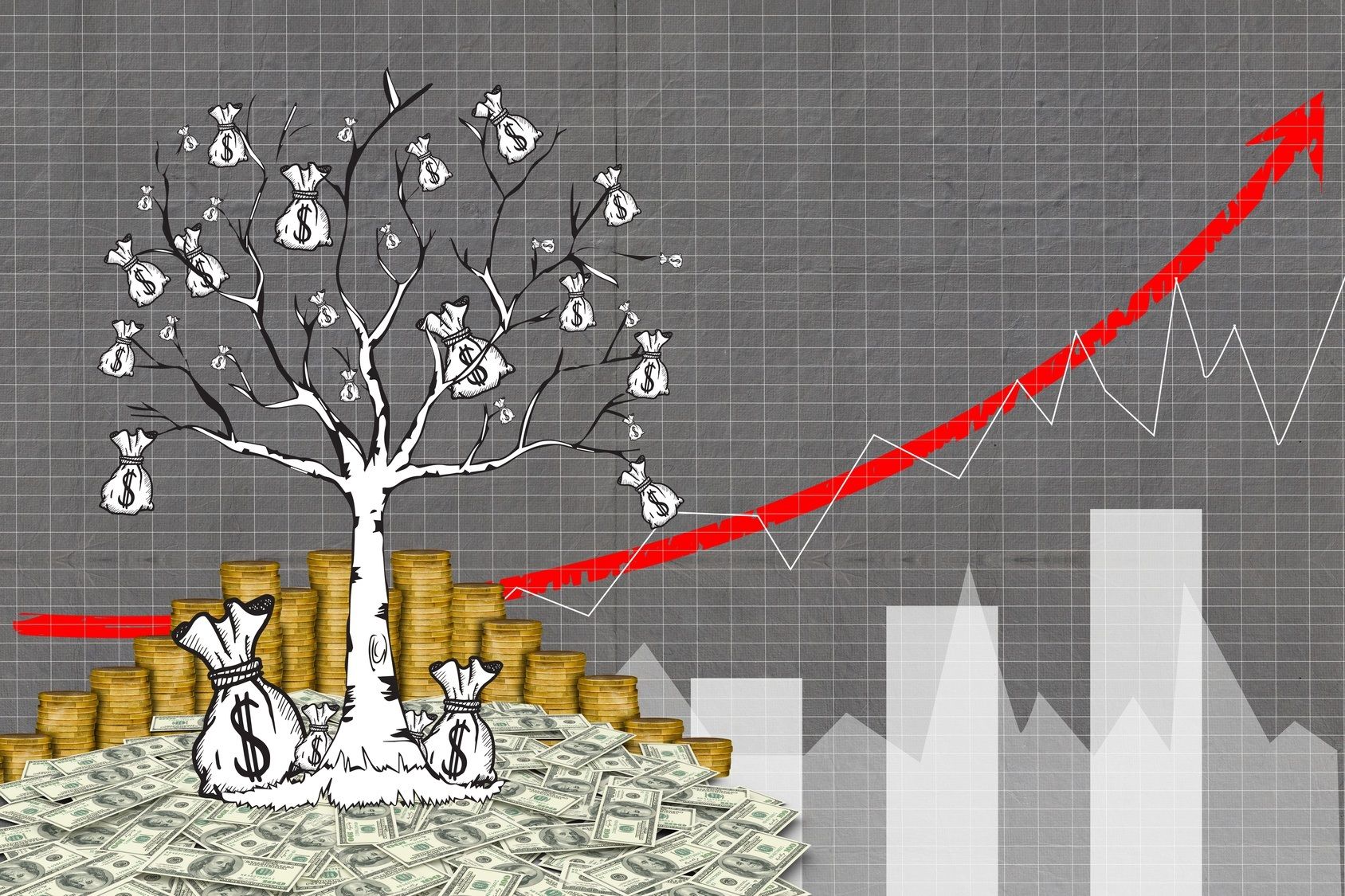
Despite this asymmetry, there appears to be a uniform hesitance among Americans to embrace business as usual. While the government and states can issue formal re-opening declarations, they cannot force people to spend. This divergence is the reason so many expect that the economic recovery will take so long.
Consider survey data published in The Kiplinger Letter, which indicates that half of US consumers will not feel comfortable returning to their normal routines until a vaccine is ready. Such a vaccine will likely require a minimum of one year to develop and distribute, if ever. The same research shows that nearly one-quarter of consumers think that the pandemic will last another six months. Another one-quarter expect current circumstances to last for another year.
These survey findings underscore an important fact about our economy; consumers decide when the recovery begins, not the government. This fact has major implications given that 67% of the US GDP is made up of personal consumption expenditures. In short: until consumers feel safe enough to get back to shopping the economy will have a low pulse.
Equity investors are feeling these effects. Many of the companies included in the S&P 500 require a healthy level of consumer spending. For this reason, they are seeing a decline in share values. At the same time these companies are suspending their dividend payments. A defensive pivot is unlikely for many of these businesses who, like giant oil tankers, are simply too large to change direction and navigate a new course that is less dependent on consumer spending. They, like so many others, will have to make aggressive cost cutting measures and wait out the storm.
Individual investors, however, do not need to wait. They can make moves now. They can choose gold, an asset that is not beholden to the all-important consumer spending that governs our twenty-first century economy. Now it the time for investors to release themselves from the shackles of consumer sentiment.
Even as a recovery does begin to take shape it is unlikely that consumers will return to the spending levels seen before the pandemic. Family budgets will have long since contracted. Lower consumption will be the new normal as Americans become more accustomed to simpler living that involves less shopping. Some have suggested that pent-up demand will unleash a tidal wave of spending. This, however, is unlikely as more people struggle to cover ordinary living expenses in the wake of 20 million job losses in the month of April alone. Today, the unemployment rate is 14.7%, representing the worst figure since 1939. Recoveries happen in inches, not yards.
Forward-thinking investors are taking this opportunity to shore up their investible assets and preserve and even grow their wealth with an investment in gold.
Want to read more? Subscribe to the Blanchard Newsletter and get our tales from the vault, our favorite stories from around the world and the latest tangible assets news delivered to your inbox weekly.
Monday Morning Wrap Up: May 18, 2020
Posted on — Leave a comment
The days are getting longer. The sun is shining brighter. Flowers are blooming. Garden centers are reopening in many part of the country so people can begin their spring planting: seeds, tomato plants, annuals and more. Spring is a time of new beginnings.
We as a country are still mired in a great deal of uncertainty, yet there is so much to be hopeful about. In the midst of the economic distress, tragic health issues and yes the deaths of many Americans, there are green shoots. Take heart. Every day there is something to be grateful for, if you take the time to focus on it.
Vast sums of money are being poured into finding a vaccine for the coronavirus. Many families are spending more quality time with each other than ever before. Those separated geographically are connecting by video visits. While millions of Americans have lost their jobs, millions more are able to telecommute and work from home. This pandemic reminds us how strong we are as a nation, and as individuals.
Week in Review
Retail sales collapsed a record 16.4% in April. Consumer spending fell off a cliff last month as the lockdown kept Americans away from malls, barber shops, furniture stores and restaurants. COVID-19 has stolen the lives of many Americans, and the U.S. economy is also a victim of this treacherous virus.
The economic collapse we’ve witnessed in the past two months is mind-blowing. It defies anything we have seen in the last 100 years and is the fastest and deepest recession in American history.
Hopes for a V-shaped recovery are dissipating fast.
Economists are warning that we could be facing an unheard of 40% decline in GDP this quarter.
Every economic cycle is different. But, this particular COVID-19 recession and recovery will be especially different, given the cause. Revenues nosedived dramatically across many industries over the past two months and it will take time for those revenue streams to come back. It’s true, stocks are off their March lows right now. But, companies can’t make money if the economy has fallen off a cliff and can’t get back up very fast.
Attitudes are different regionally, of course. But, in some parts of the country, Americans are still afraid to go to the grocery store, let alone get on an airplane, rent a car and stay in a hotel.
There are now reports that a portion of the recent “temporary” layoffs will become permanent for millions of Americans as businesses make the difficult decision to shut down for good. Many Americans will not be returning to their old jobs because the businesses are closing down.
Fed officials warned last week of widespread business failures ahead.
“You will get business failures on a grand scale and you will be taking risks that you would go into depression” if shutdowns persist, Federal Reserve Bank of St. Louis President James Bullard said last week.
Meanwhile, Fed Chair Powell warned about the potential for lasting economic damage unless policymakers pass another economic stimulus plan.
But, we already have so much debt…
Staggering Debt
The U.S. Treasury announced a record $737.9 billion budget deficit in April, as the federal budget deficit continues to grow. That compares to a $160.3 billion surplus in April last year. The budget, of course, was destroyed by virus spending and the shift of the tax date, which is why April is usually a surplus month with the inflow of tax revenue.
While the COVID-19 pandemic is today’s crisis, the colossal debt load of our nation will be a crisis for the future that can’t be ignored. In this fast-changing world, gold is taking an increasingly strategic role in portfolio diversification.
Gold Shines Bright
Current gold investment demand remains at record high levels. As the stock market weakened last week, gold prices gained. Gold is trading at the highest level since late 2012. As the uncertainty over what lies ahead for the U.S. economy in the second half of the year, gold’s stellar performance shines a spotlight on its strategic role as a store of value, liquidity source and a wealth building vehicle.
Some money managers are comparing the current rising cycle in gold to the bull market of the 1970’s.
“Once the bull market started again in 1976, it went up for four years and it went up basically from $100 to $890, so nearly nine-fold. If you use the same ratio to today’s numbers, we would end up having gold, at some point in the future, $8,000, $9,000 gold, but we’re talking five to 10 years, I think,” Florian Grummes, managing director of Midas Touch Consulting said last week.
Silver Bull Run Is Beginning
The silver market climbed to a fresh 2-month high last week. Some analysts expect silver to outperform gold in the weeks ahead as industrial demand begins to pick up as countries begin to cautiously emerge from shelter-in-place and shutdown requirements.
Gold – A Replacement for Bonds
This pandemic is changing so many things. From the way we conduct our daily lives, to the interest rates offered at the bank, to debt levels our government is taking on…everything is different. It is also changing the attitude of investors toward bonds.
As we highlighted last week, but believe it is worth stating again, investors are turning to gold as a replacement for bonds in a world where central bank monetary policy is centered on ultra-low interest rates.
The Wells Fargo Investment Institute said in a recent report that gold is being utilized by investors as a substitute for holding long-term bonds as a perceived safe-haven investment. “With no particular ties to a government or other bond issuer, we believe gold looks attractive to long-term investors.”
Interest rates have been low since the 2008 crisis and never returned to normal levels. The COVID-19 recession and bear market ensures that near-zero interest rates could be a hallmark for the next decade too.
“In our view, more central banks will move towards explicit targets for government bond yields, a policy previously adopted in the US during the Second World War as debt surged,” Capital Economics said in a research note last week.
In this environment, it makes more sense than ever to consider increasing your allocation to tangible assets like physical gold.
Consider replacing a portion of your bond allocation with a hard asset like gold that 1) is increasing in value and, 2) is an asset that will preserve your purchasing power and, 3) is a financial asset that can’t be manipulated or weakened by central bank printing presses or governments besieged with enormous debt loads.
Best wishes,
David
This Coin Is Hard To Find
Posted on — 2 CommentsIf you collect rare coins, you are probably familiar with the Winged Liberty Head Dime, popularly known as the “Mercury” Dime.
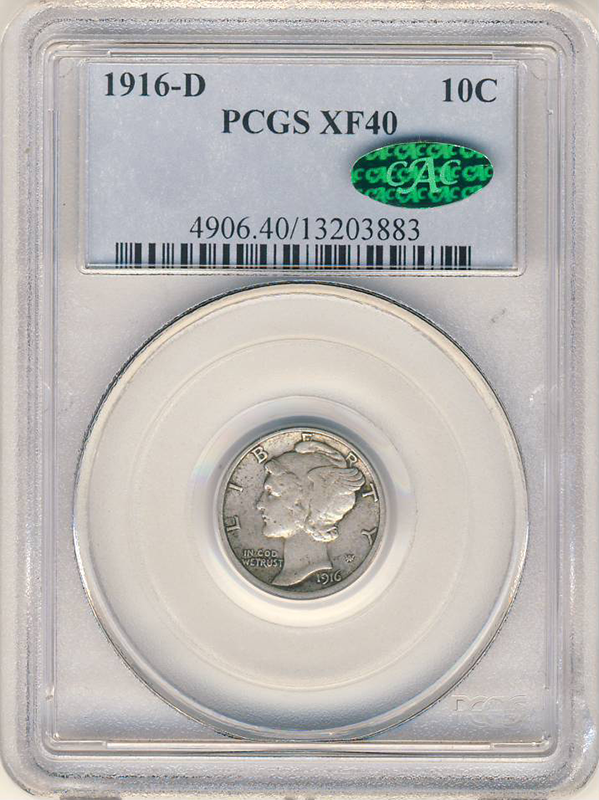
The U.S. mint struck this beloved coin from 1916 until 1945. This is one of the most popular and iconic coins that numismatists acquire for sets. Easy availability of most of the years is one reason that even beginning collector will reach the satisfying goal of owning a Mercury Dime set.
Within the Mercury Dime series, there are only a few absolute rarities and there is only one that is hard to find.
The 1916-D is the scarcest major key date and rarity within the Mercury Dime series. Only 264,000 were struck and we have one. You can see it here. A numismatic collector paid a record $207,000 for the 1916-D back in 2010 for a MS67 specimen.
Why did the 1916-D Mercury Dimes have such a low mintage of only 264,000?
Production of this coin was halted after the U.S. Treasury department entered an urgent order late in the year for 4 million quarter dollars.
Collectors seek to add 1916-D Mercury dimes to their collections due, in part, to its low mintage and because of their unique status as first ‘year-of-issue’ type coins. Some type collectors only acquire first-year coins.
Renowned sculptor Adolph A. Weinman designed this highly sought after coin. Even during its years of production, collectors clamored to own these coins for their collections.
Some Americans confused the depiction on the reverse of the coin of a young Liberty with the Roman god Mercury, which is how it’s popular name caught on. The coin’s design received positive reviews within the artistic community. However, some modifications were required as the coin did not perform well in vending machines.
The Mercury dime is struck with 90 percent silver and 10 percent copper and the coin contains just over .072 troy ounces of silver.
Have you embarked on the journey of collecting sets? We’d love to hear about your experiences in a comment below! Many collectors find that their enjoyment of this hobby and investment increases exponentially when you set goals and acquire sets. From a financial perspective, one of the best way to invest in rare coins is to acquire sets. In fact, many collections have been sold as a whole for more than the total value of the individual coins. If you have any questions about the types of sets that could be a good fit for your interests and financial goals, give Blanchard a call today!
Want to read more? Subscribe to our newsletter and get our tales from the vault, our favorite stories from around the world and the latest tangible assets news delivered to your inbox weekly.
Monday Morning Wrap Up: May 11, 2020
Posted on — Leave a commentAmerica is Resilient 
As we move into the second month of the COVID-19 pandemic, it’s worth pausing to remember how our country overcame past crises. Remember the historical events that shook our country like the Spanish flu, the Great Depression, Pearl Harbor, 1970’s oil embargo, 9/11, the 2008 financial crisis and more.
America is resilient. We as a nation worked through previous crises and this too shall pass. While the details and cause of the crises are different, focusing on the ideals our country is founded upon reminds us that America’s spirit is strong. We are a nation founded on courage, determination, optimism, rugged individualism and compassion. Take heart. We will get through this.
Scars and Battle Wounds
Day after day there are still news stories about lives lost to coronavirus and jobs lost to businesses that are shut down. These are the facts. Our nation will emerge from this crisis, but there will be scars and battle wounds.
The labor market swung from full employment at the start of the year to one of the highest levels of unemployment ever seen in American history.
Last Friday’s April jobs report revealed a shocking 14.7% unemployment rate. The pandemic crisis forced Depression sized job losses on the U.S. economy in a matter of weeks. Jobs were lost in restaurants, bars, the arts, entertainment, recreation industries and hotels.
Last week another 3.2 million Americans filed for unemployment benefits, bringing the total number to 33.5 million since the crisis started. This is unprecedented for its speed and its scope. While these are data points they also represent people and families who have lost their jobs and a way to pay their rent or mortgage and put food on the table. The challenge that lies ahead is determining how quickly these 33.5 million people get back to work. It will take time. Some economists now estimate it could take up to a decade before the unemployment picture fully heals.
Wall Street versus Main Street
The economic news has been terrible. However, stock market investors are looking past that and seeing sunny skies. This is a classic divergence between Wall Street and Main Street.
Stocks staged a rally last week, fueled by the Fed’s punch bowl, easy money-printing policies. Is it a case of stocks going too far, too fast?
Many experts say yes.
Simply put, the Fed’s bond buying is driving stocks higher. The Fed purchased $625 billion of Treasuries and corporate bonds in recent weeks, an amount larger than the central bank’s normal purchases over an eight month period. As mutual fund companies rebalance their stock/bond holdings, the inflows into bonds cascaded and artificially inflate the stock market.
Many mainstream economists are publicly wondering if the recent gains in the stock market and on Wall Street are getting ahead of the reality that those on Main Street still face.
China Tensions Climb
It’s not just the trade war that the U.S. and China are bickering about these days.
Last week the U.S. Administration accused China of creating the coronavirus in a lab in Wuhan. The Chinese government flat out denied this accusation calling it a smear campaign. While the origin of the global pandemic doesn’t change the result, the increased level of sniping between the world’s two largest economies creates new challenges in a world that needs cooperation across economic, health, environmental partnership.
Gold Remains Favored Asset
In this environment, gold remains a favored asset among global investors. The World Gold Council reported last week that global gold-backed ETF funds had inflows for the sixth straight month in a row.
This data underscores the deep trust that investors have in gold. However, investors who gain exposure to gold through an ETF are not ever taking physical ownership of the metal and thereby are depriving themselves of the actual true portfolio diversification value of tangible assets. If you have questions about the differences between physical gold ownership and paper gold ownership, please reach out to a Blanchard portfolio manager today.
“We like Gold as Part of a Well Diversified Portfolio”
That’s what the Wells Fargo Investment Institute said about gold in a May 4th research report. Here’s more analysis.
“Some may brush off gold’s 14% year-to-date return as gold being a defensive asset in a ‘risk-off’ world that is concerned with the coronavirus. We don’t see it that way. Gold has been performing well for a few years now. In 2019, gold was up by 20% and we upgraded our gold targets twice. We raised our year-end gold targets again in March 2020 and we did it again last week. Our new year-end target of $1,800-$1,900 calls for gold to test its 2011 all-time high of $1,900.”
The Wells Fargo Investment Institute added that “we believe that gold has a host of economic and market factors working in its favor. Of course, the increased volatility of 2020 is one. Gold’s prime macro driver, though, continues to be the direction and level of global interest rates and their persistent flirtation with negative.”
Gold: A Bond Substitute
The Wells Fargo Investment Institute also noted that gold is being utilized by investors as a substitute for holding long-term bonds as a perceived safe-haven investment. “With no particular ties to a government or other bond issuer, we believe gold looks attractive to long-term investors.”
Moving Forward
America is resilient, yet this pandemic will change us forever. It is changing people’s financial and health pictures and shifting the core principals of Federal Reserve monetary policy.
The coronavirus pandemic will also leave in its wake a sharp increase in public sector debt in the United States. We shifted from a thoughtful, effective and responsible Federal Reserve era in recent decades into a new wild west of money printing, QE Infinity and pledges to ‘do whatever it takes.’ While these policies may provide short-term liquidity to the economy right now, you will be faced with a government with unsustainable debt loads and devalued paper currency as a result.
As you decide how to protect yourself and your loved ones in this changing world, gold can provide a level of security and trust that is unmatched by any paper money churned out from a heavily indebted government printing press.
Take that to the vault.
Stay safe,
David
The Role of Rare Coins in Your Portfolio
Posted on — Leave a commentMany numismatists acquire rare coins for their rich history, exquisite beauty and absolute uniqueness. Owning early U.S. American gold and silver coins opens a window to a bygone era in history and invites exploration of the exciting years as our nation developed. Once you begin learning about rare coins, the interest, love and appreciation for this unique asset class grows stronger.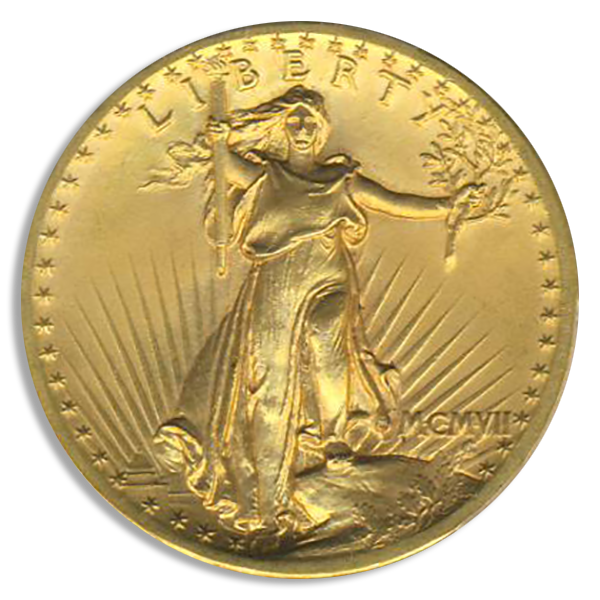
Beyond the pure aesthetics of rare coin ownership, there is proven historical research that reveals just how powerful an allocation to numismatics can be for your long-term portfolio growth.
In the midst of the COVID-19 pandemic, which is upending traditional monetary and fiscal policy, the case for acquiring rare coins right now is at its strongest in a decade. Let’s look first at three elements that investors desire in any asset class: liquidity, safety and yield, and consider how rare coins stack up (no pun intended).
Rare coins are liquid. The definition of a liquid investment is how quickly and easily you can access your cash if you need to sell. Rare coins, especially those highly prized by numismatics like $20 gold Saint-Gaudens are one of the most liquid assets you can find. Not only do these rare coins offer intrinsic value (the gold content of the coin), they offer increased value over bullion due to their rarity. This is one of the most easily recognizable rare coins and offers the ultimate security of liquidity if you ever need to sell fast.
Rare coins are safe. Investments in rare coins are safe when you consider the return of your money. Over the past 20 years U.S. rare coin values have more than quadrupled and the asset class remains in a rising uptrend. Given the intrinsic and rarity value of numismatics, this investment offers you a safe-haven asset that will protect your future purchasing power and assure the return of your money.
Rare coins offer yield. Best of all, rare coins offer the opportunity for dramatic price appreciation. In fact, rare coins of all types returned an average annual 10% yield from 1979-2019. That is an incredible double-digit return over four decades.
Gold Is Money
Why rare coins right now? Gold bullion has outperformed every G-10 currency so far in 2020 and also did so last year. The same trend is unfolding in emerging market currencies, where gold is outpacing all major emerging market fiat currencies in 2019 and 2020.
The coronavirus will leave a significant hangover for the U.S. economy long after the lock-down orders have been lifted. The U.S. government will be saddled with a legacy of higher debt and an overinflated fiat currency. Looking ahead, interest rates in the United States and major G-10 economies will be at zero or negative for a long period ahead. The International Monetary Fund says the global economy is facing the worst recession in 90 years. In this environment of money printing and fiat currency degradation, gold is returning to the forefront as the only true store of value for one’s assets.
Rare coin values tend to outpace gains of the underlying metal (gold, silver) during periods of economic weakness, inflation and bear markets in stocks. Bank of America now forecasts gold to rise to $3,000 an ounce over the next 18-months. Saxo Bank targets gains in gold to $4,000 an ounce. Bank of America also upped its silver forecast projecting gains to $20 an ounce over the next year.
If you’d like to leverage the bull market in metals to the maximum, investments in rare coins offer you an opportunity of a generation right now. Digging deeper, Saint-Gaudens are the rare coins that most often mimic the movements of gold bullion. The $20 Saint-Gaudens series are rare gold coins minted from 1907 to 1933 and were minted with .96750 ounce pure gold.
While Saints do mimic gold price movements, once gold starts a significant run – like it is doing right now, Saints can significantly outperform gold prices. That means with gold in a major bull market, Saint-Gaudens have the potential to increase even more in the years ahead.








